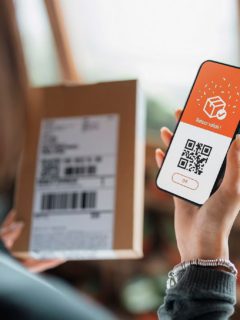Over the years, the luxury sector has changed. If it used to attract customers from a rather wealthy segment of the population, it is now seen as increasingly democratised and accessible. Young targets do not hesitate to acquire high-end products and appreciate the codes of luxury.On the other hand, the luxury sector relies more and more on foreign targets, coming from the Middle East or China in particular. These targets have different consumption attitudes from the French and are more inclined towards e-commerce
| A study by Bain & Co. indicates that China accounted for 90% of the growth in the global luxury market in 2019. It also estimates that by 2025 the importance of Chinese consumers will be even greater than it is today. Sales in China will then account for almost half of global luxury purchases, compared to just over a third in 2019. In addition, Chinese purchases will be relocated to China, reducing their overseas purchases, while the domestic market will grow. |
these are all reasons for the luxury sector to launch itself massively into e-commerce and webmarketing: a channel prized by young buyers, and practical for establishing the reputation of a brand internationally. The fear of e-commerce for this sector remains: jeopardising the “luxury” positioning, risks of counterfeiting… but the game is worth the candle.How to recreate the feeling of exclusivity, of scarcity, so dear to the sector, in luxury e-commerce?

- Adopt unique brand design and communication
- Create a differentiating customer experience through luxury e-commerce
- Trying luxury-oriented online events
- Invest in influencer marketing
- Take care of the delivery of your luxury e-commerce products
- Make packaging a vector of customer satisfaction
Adopt a unique brand design and communication
as you know, the entire e-commerce strategy of the luxury sector consists of recreating a premium image on the web. This requires, in particular, the implementation of a web design and communication consistent with the image that the brand may have in shops or in traditional advertising. Here are a few keys to success in this regard
- Create a website with the brand’s graphic charter, but adapt it if necessary. Major brands are used to communicating via traditional media, some of whose codes differ from those of the web. For example, your basic typography may be less legible on the web than in print.
- Create specific graphic charts for other web communication channels: video, social media (each social network has its own specific design)…
- Set upa well-optimised e-commerce order process. Luxury and e-commerce mean creating a real online shopping experience. Why not, in the event of stock shortages, indicate an alternative (call the after-sales service to order it) rather than leaving the visitor hungry?
 An example of an innovative digital ordering process, on the Louis Vuitton haute-couture leather goods website
An example of an innovative digital ordering process, on the Louis Vuitton haute-couture leather goods website
- Reuse the world of traditional advertising (TV, print…) to create web ads. Your web marketing strategy can be inspired by your traditional campaigns! For example, think about creating video clips to promote on social networks (organically and via paid advertising) to spread your luxury brand image on the Internet.
create a differentiating customer experience via luxury e-commerce
At the heart of the success of luxury brands is a key element: the notion of exclusivity, of a differentiating experience. The targets of the luxury industry, in e-commerce, are not only looking to make a purchase: they want to live a timeless, different, personalised moment. You therefore need to create a luxury e-commerce experience that is coherent with what your targets can live in your points of sale. Think in particular of..
- Beresponsive on the web. Make your sales advisors available to your e-commerce customers, via live chat or social networks. Why not take the experience a step further, and offer video-conference appointment slots to help customers with their buying decisions?
- Putting innovation at the heart of luxury e-commerce. For example, you could consider offering online product customisers, or virtual product try-ons. For example, Gucci launched a campaign on Snapchat promoting its shoes, using Try-On technology, which allows targets to virtually try on models using a dedicated Snapchat filter.
this will strengthen your traditional brand image, while making luxury accessible to as many people as possible. cta id=’3ad845d7-456f-412d-9fe4-6dc59460d84f’]
Try luxury-oriented online events
It is undeniable that traditional luxury marketing cannot do without events, especially to develop brand awareness in the press. What if, when you launch your e-commerce business, you also switch to digital events? Consider launching an online event, for example
- Online events, similar to physical “private sales” events. For example, the luxury brand Bulgari offers a specific application dedicated to one of its high jewellery collections, made up of extremely luxurious models. These are presented in virtualised form, with a rendering as close to reality as possible. Until now, the presentation of such a collection was organised physically, in the presence of the brand’s best customers and journalists.
- Live sales: Some luxury houses are launching this process, which consists of broadcasting live streaming of private sales of products. The practice is very popular with Chinese targets in particular: in China, in 2019, “Live Sales” have exploded, and the phenomenon is only accelerating. It is estimated that just over 60,000 “Live Sales” have brought together 400 million users on Taobao.
investing in influencer marketing
You can’t have missed the digital marketing trend of influencer marketing. This is a way for a brand to gain visibility via targeted influencers in its sector, who promote its products to their communities, more or less directly. This method is proving to be a winner for the luxury e-commerce sector. It allows you to create a strong link with your targets, via communities that are already well trained, while easily leading to the web platforms of luxury companies. To implement such a strategy, you will have to..
- Target the right influencers, i.e. those whose communities already include a good part of your target-types. Be careful not to multiply the key influencers, in order to keep a feeling of exclusivity specific to the luxury sector.
- Co-create with them the promotional content that they will put forward. You can think of launching dedicated content campaigns, or even partnerships where you co-create a specific product with the influencer in question.
- Makepromotional advantages available to the targets reached. The notion of exclusivity, of belonging to a community, also involves the implementation of promotional codes or specialised goodies.
- Create nice “discovery boxes” to send to your influencers, which they can “unbox” in their content. On this point, the last part of this article will enlighten you.
take care of the delivery of your luxury e-commerce products
E-commerce users now expect increasingly fast and innovative deliveries. And luxury consumers are no exception to the rule… and even expect luxury e-commerce to have specific features that must be taken into account. So make sure you take care of the delivery of your products
- Give your customers the opportunity to be delivered by different delivery methods. If home delivery is a classic to be taken care of, click&collect in shop allows you to recreate a strong link with the physical point of sale.
- Choose a carrier that offers specific insurance for expensive products. On this subject, don’t hesitate to consult the article “What solutions for your fragile, bulky or valuable parcels?
- Protect your parcels from fraud and theft by implementing additional security measures, such as strapping your parcels or closing your cardboard boxes with glue rather than simple adhesive.
make the packaging a vector of customer satisfaction
In luxury e-commerce, as in all other e-commerce sectors, the packaging is the first physical contact that you establish with your customers. It must therefore be a vector of your brand image, but also of your final customer satisfaction. So take the time to..
- Design personalised packaging, based on your brand image. You can think in particular of conveying your CSR values via personalised eco-responsible packaging, or even to transmit your message to your customers
- Think about the return of goods. To do this, you can opt for a return package. Its principle? To have two self-adhesive strips (one for the outward journey, the other for the return of the parcel), and a robustness that allows it to protect your goods from a possible return.
- Take care of the unboxing of your parcels. Whether you offer luxury ready-to-wear, high-end cosmetics, or even spirits, unboxing (or the unpacking of parcels) is essential for your communication on the web. Your customers are inclined to share the unpacking of their products on social networks, helping you to increase your visibility on the web! To dig deeper into the subject, discover all the concrete advice you can apply in our complete guide to unboxing
from simple retail to e-commerce, luxury still has a bright future ahead of it… as long as you know how to grasp consumer trends at the right time and make them differentiating elements of your strategy!














